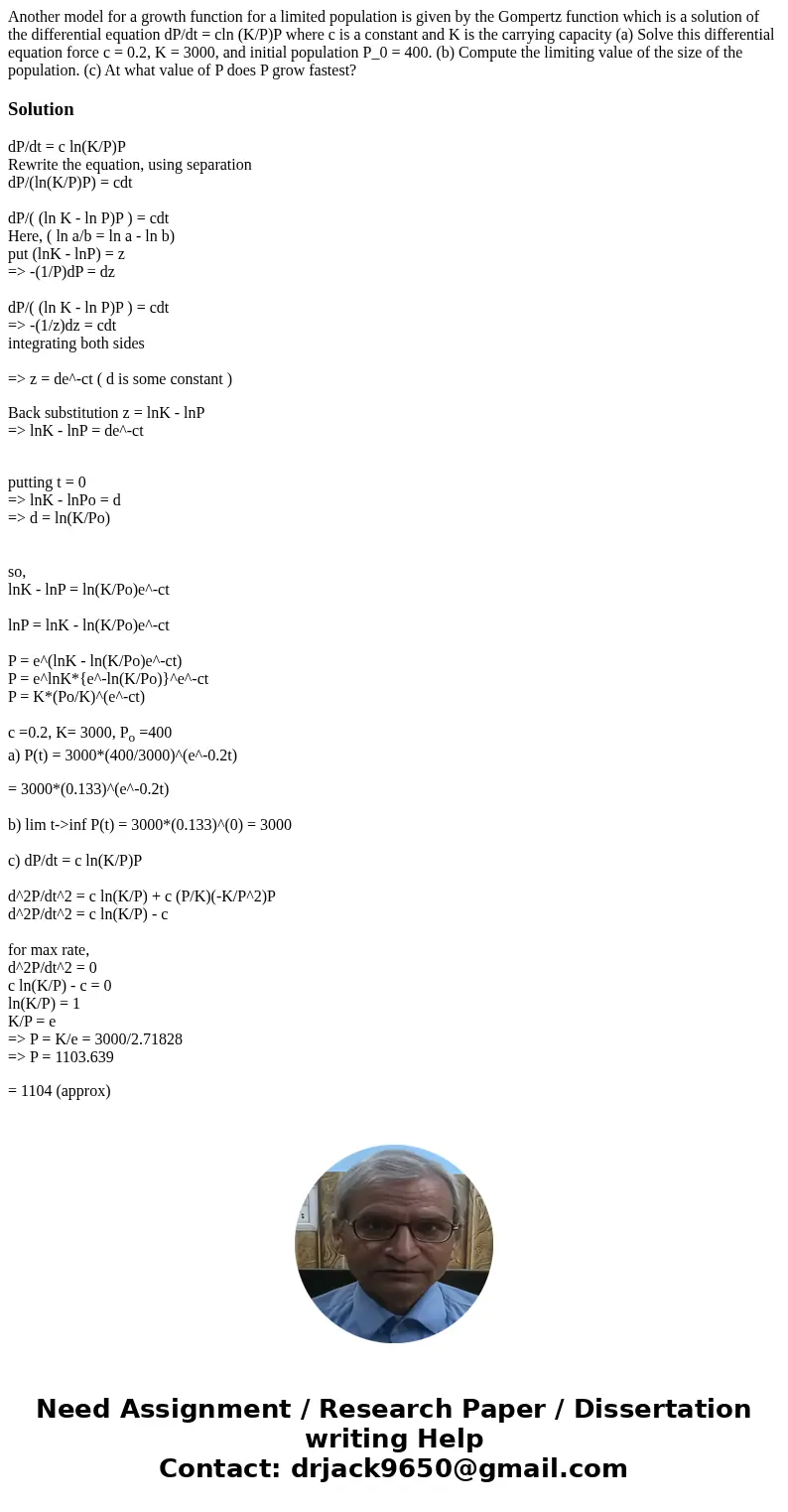Another model for a growth function for a limited population
Solution
dP/dt = c ln(K/P)P
Rewrite the equation, using separation
dP/(ln(K/P)P) = cdt
dP/( (ln K - ln P)P ) = cdt
Here, ( ln a/b = ln a - ln b)
put (lnK - lnP) = z
=> -(1/P)dP = dz
dP/( (ln K - ln P)P ) = cdt
=> -(1/z)dz = cdt
integrating both sides
=> z = de^-ct ( d is some constant )
Back substitution z = lnK - lnP
=> lnK - lnP = de^-ct
putting t = 0
=> lnK - lnPo = d
=> d = ln(K/Po)
so,
lnK - lnP = ln(K/Po)e^-ct
lnP = lnK - ln(K/Po)e^-ct
P = e^(lnK - ln(K/Po)e^-ct)
P = e^lnK*{e^-ln(K/Po)}^e^-ct
P = K*(Po/K)^(e^-ct)
c =0.2, K= 3000, Po =400
a) P(t) = 3000*(400/3000)^(e^-0.2t)
= 3000*(0.133)^(e^-0.2t)
b) lim t->inf P(t) = 3000*(0.133)^(0) = 3000
c) dP/dt = c ln(K/P)P
d^2P/dt^2 = c ln(K/P) + c (P/K)(-K/P^2)P
d^2P/dt^2 = c ln(K/P) - c
for max rate,
d^2P/dt^2 = 0
c ln(K/P) - c = 0
ln(K/P) = 1
K/P = e
=> P = K/e = 3000/2.71828
=> P = 1103.639
= 1104 (approx)


 Homework Sourse
Homework Sourse